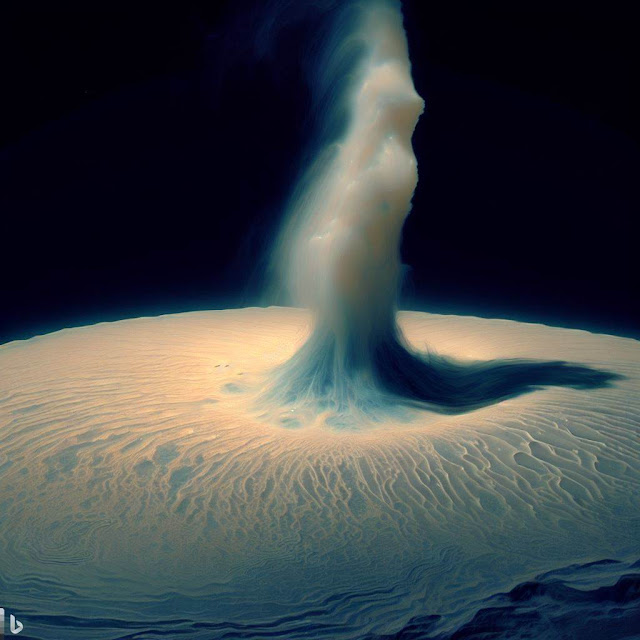The James Webb Space Telescope (JWST) is a marvel of modern astronomy that has been observing the universe in infrared wavelengths since its launch in December 2021. One of its first targets was Saturn’s moon Enceladus, a small icy world that harbors a global ocean beneath its frozen crust. Enceladus is also known for its spectacular geysers of water vapor and ice that erupt from cracks near its south pole, creating a huge plume that extends far into space.
Using its Near-Infrared Spectrograph (NIRSpec) instrument, JWST was able to map the properties of the plume and measure its composition, size, and speed. The results, published in Nature Astronomy, reveal that the plume is much larger and more powerful than previously thought, and that it contains traces of organic molecules that could be potential building blocks of life.

The plume spans about 9,600 km (6,000 miles), which is 20 times the diameter of Enceladus itself. It ejects water at a rate of about 360 liters (95 gallons) per second, enough to fill an Olympic-sized swimming pool in just a few hours. The water vapor reaches speeds of up to 2 km/s (4,500 mph), escaping the weak gravity of Enceladus and forming a torus-shaped cloud around Saturn’s E-ring.
The NIRSpec instrument also detected signatures of methane, ammonia, carbon dioxide, and hydrogen in the plume, as well as more complex organic molecules that have not been identified yet. These molecules are likely produced by hydrothermal vents at the bottom of Enceladus’ ocean, where water interacts with hot rocks and minerals. Some of these molecules could be precursors to amino acids, the building blocks of proteins.
The discovery of these organic molecules adds to the evidence that Enceladus is one of the most promising places in the solar system to look for signs of life. Previous observations by NASA’s Cassini mission showed that the ocean of Enceladus is salty and alkaline, and that it contains hydrogen gas that could be used by microbes as a source of energy. Cassini also flew through the plume several times and sampled its composition directly, but it did not have the sensitivity or resolution of JWST.
The JWST observations also provide new insights into the origin and evolution of the plume. The researchers found that the plume varies in intensity depending on the position of Enceladus in its orbit around Saturn. When Enceladus is closer to Saturn, the tidal forces exerted by the planet squeeze and heat up the moon’s interior, causing more water to escape through the cracks. When Enceladus is farther away from Saturn, the tidal forces relax and the plume becomes weaker.
The researchers also suggest that the plume has been active for a long time, possibly billions of years. This implies that Enceladus has maintained a stable source of heat and water for a long time, which is favorable for the emergence and persistence of life.
The JWST observations are only a glimpse of what this powerful telescope can do to explore the mysteries of Enceladus and other icy moons in our solar system. Future observations will aim to characterize the plume in more detail, identify more organic molecules, and look for possible variations over time. JWST will also complement other missions that are planned or proposed to visit these worlds, such as NASA’s Europa Clipper and ESA’s JUICE.
Enceladus is a fascinating example of how a small moon can have a big impact on its environment and on our understanding of life in the universe. Thanks to JWST, we can now see this impact more clearly than ever before.
Reference(s): NASA.





